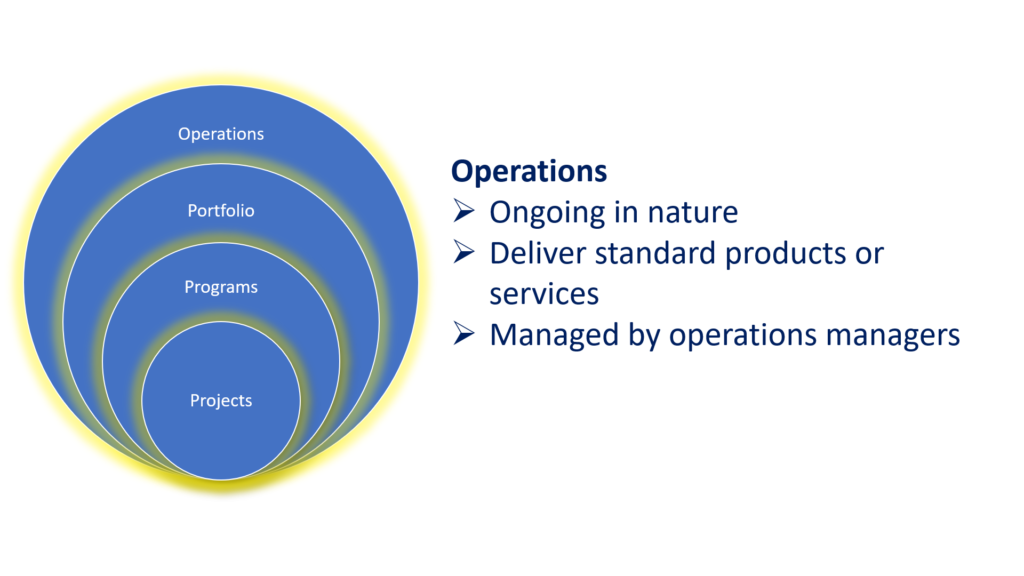
- Operations are ongoing in nature
- Operations deliver standard products or services as output
- Operations are also constrained by limited resources of time, cost and scope
- Operations are managed by operations managers
An operation is an ongoing, repetitive, and often standardized set of activities or processes aimed at maintaining the routine functions of an organization. Operations are typically characterized by their continuous nature and are essential for the day-to-day functioning of a business or entity.
Here are some examples of operations:
- Manufacturing Operation: The production line in a factory that produces automobiles.
- Customer Service Operation: The department within a company that handles customer inquiries and support.
- Retail Operation: The daily operations of a retail store, including stocking shelves, serving customers, and managing inventory.
- Financial Operation: The processes involved in managing finances, such as accounting, budgeting, and payroll.
Now, let’s look at the differences between projects and operations:
- Objective and Duration:
- Projects have specific objectives and are temporary endeavors with a defined beginning and end. Once the objectives are achieved, the project is completed.
- Operations are ongoing and have the objective of maintaining the regular functions of an organization. They do not have a specific end date and continue as long as the organization exists.
- Scope and Repetition:
- Projects have a unique scope that distinguishes them from other initiatives. They involve creating something new, whether it’s a product, service, or result.
- Operations involve repetitive tasks and processes aimed at sustaining the business’s day-to-day activities. While individual tasks within operations may vary, the overall scope remains consistent.
- Resource Allocation:
- Projects require dedicated resources allocated for the duration of the project. These resources may include personnel, funds, equipment, and materials.
- Operations rely on ongoing resource allocation to ensure the smooth functioning of the organization. Resources are allocated based on the organization’s needs and priorities, rather than for a specific project.
Despite these differences, projects and operations are interconnected within an organization:
- Projects may create deliverables or outputs that become part of the organization’s ongoing operations. For example, a project to develop a new software application may result in the implementation and maintenance of that application as part of the organization’s IT operations.
- Projects may also arise from operational needs or improvements identified during regular operations. For instance, a company may initiate a project to upgrade its manufacturing equipment in response to operational inefficiencies.

